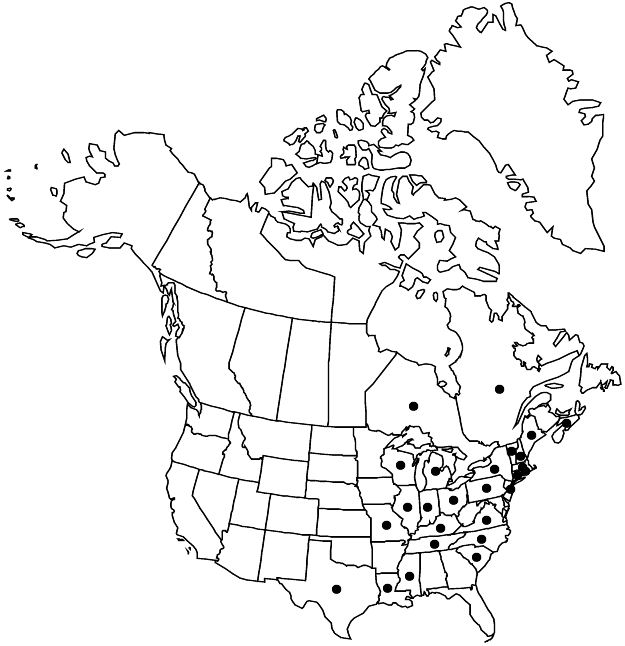Difference between revisions of "Rosa gallica"
Sp. Pl. 1: 492. 1753.
FNA>Volume Importer |
imported>Volume Importer |
||
| (5 intermediate revisions by 2 users not shown) | |||
| Line 28: | Line 28: | ||
|elevation=0–500 m | |elevation=0–500 m | ||
|distribution=N.S.;Ont.;Que.;Conn.;Ill.;Ind.;Ky.;La.;Maine;Mass.;Mich.;Miss.;Mo.;N.H.;N.J.;N.Y.;N.C.;Ohio;Pa.;R.I.;S.C.;Tenn.;Tex.;Vt.;Va.;Wis.;c;s Europe;w Asia (Caucasus;Iraq);introduced also in Mexico (Oaxaca);Central America;South America;w Europe (Guernsey);s Africa;Australia. | |distribution=N.S.;Ont.;Que.;Conn.;Ill.;Ind.;Ky.;La.;Maine;Mass.;Mich.;Miss.;Mo.;N.H.;N.J.;N.Y.;N.C.;Ohio;Pa.;R.I.;S.C.;Tenn.;Tex.;Vt.;Va.;Wis.;c;s Europe;w Asia (Caucasus;Iraq);introduced also in Mexico (Oaxaca);Central America;South America;w Europe (Guernsey);s Africa;Australia. | ||
| + | |introduced=true | ||
|discussion=<p><i>Rosa</i> ×centifolia Linnaeus (cabbage rose), long cultivated with about 500 ornamental cultivars known, is a probable hybrid of <i>R. gallica</i> × R. ×moschata Herrmann; it is not known to produce seed (P. V. Heath 1992). A. Bruneau et al. (2007) found that plastid DNA markers of <i>R. gallica</i> and R. ×centifolia are identical, indicating that <i>R. gallica</i> is the maternal parent. <i>Rosa</i> damascena Miller (Damask rose) also is close to R. ×centifolia and is thought to have the same parentage; if this proves true, then R. ×centifolia is the earlier name.</p><!-- | |discussion=<p><i>Rosa</i> ×centifolia Linnaeus (cabbage rose), long cultivated with about 500 ornamental cultivars known, is a probable hybrid of <i>R. gallica</i> × R. ×moschata Herrmann; it is not known to produce seed (P. V. Heath 1992). A. Bruneau et al. (2007) found that plastid DNA markers of <i>R. gallica</i> and R. ×centifolia are identical, indicating that <i>R. gallica</i> is the maternal parent. <i>Rosa</i> damascena Miller (Damask rose) also is close to R. ×centifolia and is thought to have the same parentage; if this proves true, then R. ×centifolia is the earlier name.</p><!-- | ||
--><p><i>Rosa gallica</i> is used as a tonic, mild astringent, and eye wash, and to treat bowel complaints and excessive mucous discharges. Petals of the closely related R. ×centifolia are collected for the distillation of ‘rose water,’ a laxative used also to treat infantile diseases (J. Lindley 1838).</p> | --><p><i>Rosa gallica</i> is used as a tonic, mild astringent, and eye wash, and to treat bowel complaints and excessive mucous discharges. Petals of the closely related R. ×centifolia are collected for the distillation of ‘rose water,’ a laxative used also to treat infantile diseases (J. Lindley 1838).</p> | ||
| Line 38: | Line 39: | ||
-->{{#Taxon: | -->{{#Taxon: | ||
name=Rosa gallica | name=Rosa gallica | ||
| − | |||
|authority=Linnaeus | |authority=Linnaeus | ||
|rank=species | |rank=species | ||
| Line 54: | Line 54: | ||
|publication year=1753 | |publication year=1753 | ||
|special status=Introduced | |special status=Introduced | ||
| − | |source xml=https:// | + | |source xml=https://bitbucket.org/aafc-mbb/fna-data-curation/src/2e0870ddd59836b60bcf96646a41e87ea5a5943a/coarse_grained_fna_xml/V9/V9_130.xml |
|subfamily=Rosaceae subfam. Rosoideae | |subfamily=Rosaceae subfam. Rosoideae | ||
|tribe=Rosaceae tribe Roseae | |tribe=Rosaceae tribe Roseae | ||
Latest revision as of 22:54, 5 November 2020
Stems: distal branches green to dull red; prickles internodal, curved, sometimes erect, rarely hooked, declined, 3–7 × 2–5 mm. Leaves: stipules subulate, 14–24 × 3–5 mm, auricles 4–10 mm, surfaces pubescent, eglandular; petiole and rachis with sparse pricklets, puberulent, densely stipitate-glandular; leaflets 5(–7), terminal blade slightly rugose, base obtuse to subcordate, margins shallowly 1(–2)-dentate-crenate, teeth 14–23 per side, apex acute to acuminate, abaxial surfaces pale, gray green, sessile-glandular particularly on midveins, adaxial bluish green or dark green. Inflorescences 1–3(–8)-flowered. Pedicels: bracts 1 or 2, caducous, lanceolate, 8–14 × 2–4 mm, margins ciliate, surfaces glabrous or pubescent, eglandular or stipitate-glandular. Flowers: hypanthium 5–7 × 3–5(–7) mm, neck (0–)1 × 3 mm; sepal tip 7 × 2 mm, erect or spreading; petals 27–35 × 20–30 mm [or larger]; styles exsert 2–4 mm beyond hypanthium orifice. Hips leathery. Achenes 3, 5 × 4–5 mm. 2n = 28.
Phenology: Flowering May–Jul.
Habitat: Waste areas, roadside thickets, railways, former house sites
Elevation: 0–500 m
Distribution

Introduced; N.S., Ont., Que., Conn., Ill., Ind., Ky., La., Maine, Mass., Mich., Miss., Mo., N.H., N.J., N.Y., N.C., Ohio, Pa., R.I., S.C., Tenn., Tex., Vt., Va., Wis., c, s Europe, w Asia (Caucasus, Iraq), introduced also in Mexico (Oaxaca), Central America, South America, w Europe (Guernsey), s Africa, Australia.
Discussion
Rosa ×centifolia Linnaeus (cabbage rose), long cultivated with about 500 ornamental cultivars known, is a probable hybrid of R. gallica × R. ×moschata Herrmann; it is not known to produce seed (P. V. Heath 1992). A. Bruneau et al. (2007) found that plastid DNA markers of R. gallica and R. ×centifolia are identical, indicating that R. gallica is the maternal parent. Rosa damascena Miller (Damask rose) also is close to R. ×centifolia and is thought to have the same parentage; if this proves true, then R. ×centifolia is the earlier name.
Rosa gallica is used as a tonic, mild astringent, and eye wash, and to treat bowel complaints and excessive mucous discharges. Petals of the closely related R. ×centifolia are collected for the distillation of ‘rose water,’ a laxative used also to treat infantile diseases (J. Lindley 1838).
Selected References
None.